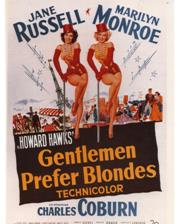I’d like to show you an ad that really impressed me
What do you think of this ad? It shows …
This ad seems to be aimed at …
According to this ad, the product is …
What I don’t like about this ad is …
Read these two texts about posters. Define the main idea and retell one of the texts in your own words.
Posters
Posters flourished as an art form in Europe and the United States in the late-nineteenth century as advances in printing technologies allowed for mass circulation. In the 1860s, French artists ushered in a new age for the illustrated poster by introducing colored images and changing the relationship between image and text. Previously, illustrations had been used to complement or complete the text. With the new style of poster, the illustration took the central position while the text frequently only had meaning in relation to the image. In medicine, these early posters were primarily used to sell pharmaceutical products or raise money for victims of disease. Drawing on the success of posters as advertising tools, public health educators began to use posters in educational campaigns during the years of the First World War. In an increasingly visually oriented culture influenced by developments in photography and moving pictures, posters frequently relied on design and colors rather than words to communicate their message.
The emergence of “visual culture” as a field of study is partly the product of the increasing array of images in our daily lives. It includes those aspects of culture that are manifested in visual form-including photographs, popular films, television, fine art, news images, advertising images, and ground-breaking digital media. While images from these sources take different shapes and use different technologies, each participates in the production and exchange of information, values, ideas, and meanings in our society. The earliest illustrated posters, for example, have a lot in common with the high-tech world of today. Each is designed to catch the attention of the viewer and communicate messages quickly, most often with limited text and strong graphics. As relatively inexpensive forms of popular media, posters in the twentieth century and the Internet in the twenty-first century are also favorite ways to advocate a cause. Both provide a forum for corporate and institutional interests alongside private and community concerns and both can be used to appeal to a broad public audience.
These qualities have encouraged public health campaigners to use posters as a powerful medium for visually communicating knowledge about disease, identifying health risks, and promoting changes in behavior. By combining innovative imagery and text, public health posters have incorporated the techniques of advertising to sell “health” as a precious commodity. In the process, poster designers developed a visual vocabulary to help shape and define “normal” and “healthy” behaviors and conditions, which has provided the basis for a variety of campaigns against infectious diseases and environmental health hazards. At the same time, posters helped to define and, sometimes, to stigmatize the abnormal, disabled, unhealthy, or contaminated individual.
Precursors of the Posters
Building on the widespread popularity of posters as advertising tools for commercial products, public health authorities realized that posters could be employed to motivate and inform the general public and soldiery during a time of conflict and confusion surrounding the First World War. Designed to communicate, invite action, and build consensus, the first public health posters addressed the devastating effects of uncontrolled infectious diseases. There were, however, a number of precursors to the first illustrated posters. For centuries, epidemics of smallpox, plague, typhus, and cholera had inspired counter measures designed to inform and educate citizens about health hazards. This section on precursors examines some of these images in the form of broadsides, engravings, and quarantine signs.
“The proliferation of images through reproduction also means that they can be accompanied by different kinds of text, which can dramatically change the signification of the image. Text can ask us to look at an image differently. Words can direct our eyes to particular aspects of the image, indeed they can tell us what to see in a picture... It could be said that viewers/consumers of images often choose to read particular meanings into them for emotional and psychological reasons, and to ignore those aspects of an image that may work against this response”.
(Marita Sturken and Lisa Cartwright).



16. Read the text and tell about your favorite color:
